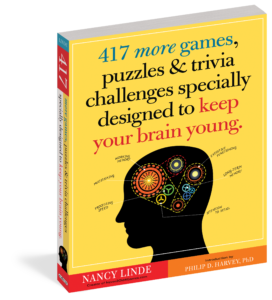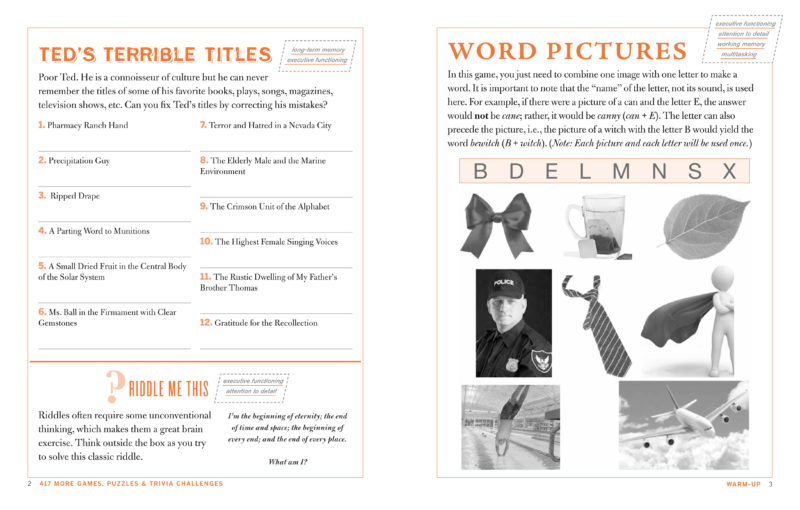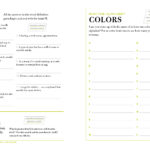It’s never too late to give your brain a workout! Nancy Linde, author of 417 More Games, Puzzles, and Trivia Challenges Specially Designed to Keep Your Brain Young, discusses the connection between games and cognitive function, the key to sticking with your goals, and her own aspirations for this upcoming year!
What inspired you to create these games that simultaneously serve as a form of entertainment and a healthy workout for the brain?
The short answer is that my mother was my inspiration. The longer answer is that about a decade ago, like many baby boomers, I found myself caring for my aging mother. After moving her into an assisted living community, I discovered a significant need for resources that not only offered seniors a way to have fun and participate in group activities, but also respected their intelligence and life experience.
I was well-aware that a few years earlier, scientific research had begun to emerge that showed how efforts to engage the brain in “thinking” challenges could help improve memory and other cognitive functions. And since I’ve always loved creating games, I had an idea that kept percolating in my mind. After my mother died, I had the time pursue it. I created a website that provided high-quality games for activities professionals who work with seniors in group settings. That was the beginning of my game service, Never2Old4Games.com, which ultimately led to my first book 399 Games, Puzzles, and Trivia Challenges Specially Designed to Keep Your Brain Young and more recently to my second book 417 More Games, Puzzles, and Trivia Challenges Specially Designed to Keep Your Brain Young.
You’ve spent a great deal of time working with senior citizens at retirement communities, assisted living residences, and other senior-serving organizations. What connections have you seen between the games they engage in and their cognitive functions?
Any time I go to a new community, I find that the seniors who have gathered are often a bit reticent. I think that many seniors don’t want to reveal any “cognitive failings” they think they may have. Who does? But I think what’s unique about my games is that they are “gettable” without being too easy, plus there’s a rich variety of formats to choose from. It never fails that within ten or fifteen minutes, that reticent group of seniors is boisterously shouting out answers and participating enthusiastically. In fact I’ll never forget one senior. When our session was over she grabbed my sleeve and pulled my face near hers.
“Thank you,” she said. “You made me feel smart.”
“You are smart,” I replied.
As that woman proved, games not only help keep our brains fit, they also make us more confident in our intellectual abilities. And in addition to the cognitive benefits, games are a great way to bring people together. That’s why, with the books, I’m especially gratified when folks write in saying that they play my games as a family. It’s a great way for the generations to learn new things, to bond . . . and to build better brain habits together!
Your book contains countless activities such as puzzles, trivia challenges, and brain teasers. Do you have a personal favorite that you enjoy creating?
Ultimately for me, the process of coming up with a new type of game is the most fun of all. I initially created a game that I called “Picture Themes” in my first book and “Common Bonds” in the second. It consists of three very different pictures, and the player has to determine what element they have in common. For example, given pictures of two tigers, a pirate’s flag, and a pair of white socks, the common element is baseball teams (Detroit Tigers, Pittsburgh Pirates, and Chicago White Sox). From that game, I was inspired to create a second game called “Odd Man Out” that was similar but didn’t require pictures. Finally, I was delighted when I came up with yet a third evolution of that game, which I call “Making Connections.” In “Making Connections,” a grid of nine words is presented and players must find the three groups of three connected items.
So many people make resolutions to improve their mind and body this time of year, but yet they often become discouraged. What advice can you give to them about sticking with their resolutions and making them count?
I’m not sure I’m the best person to give advice about keeping New Year’s resolutions. Or, maybe I am, since I’ve made hundreds of them over the years and failed at them so often. But, if it helps any, I have created a few rules for myself.
- During this season, it’s great to look forward to the upcoming year and to set goals. But don’t call them resolutions—just goals that you hope to achieve over the next twelve months.
- Don’t make too many goals—one or two at most.
- Make sure they are achievable. If you “resolve” to exercise your brain and your body for three hours every day in 2017, you’re likely to fail. But if you set a goal of doing two or three pages per day, you’ll not only have fun, but will probably keep your resolution.
Can you share your own goals for this upcoming year with us?
My main goal this year is to develop a game that will engage and entertain seniors with mild to moderate dementia. Dementia is a very difficult and growing problem. According to the Alzheimer’s Association, one person in this country develops Alzheimer’s disease every sixty-six seconds–that’s about 10,000 people every week! Yet there are very few good resources available to activity folks who work with seniors with dementia. Many end up adapting games that were created for children. And while that’s okay sometimes, most of the time it’s a bit sad to see seniors engaged in activities that don’t respect their age, intellectual abilities, and life experience. So that’s my goal, to create a game that is designed for folks with memory loss. Wish me luck!
 About the Book:
About the Book:
Cross-train your brain! Exercising the brain is like exercising the body—with the right program, you can keep your brain young, strong, agile, and adaptable. And like the most effective exercise, you don’t target just one area. This follow-up to the bestselling 399 Games, Puzzles & Trivia Challenges Specially Designed to Keep Your Brain Young, offers 417 games that target six key cognitive functions.
Here are games to improve long-term memory and games to flex working memory. Games for executive functioning, for attention to detail, for multitasking, and for processing speed. There are puzzles, trivia quizzes, visual challenges, brainteasers, and word games. Best of all, they’re fun—this is the kind of exercise that you’ll want to do—and all it takes is ten to fifteen minutes a day for a full workout.
Buy the Book
Amazon | B&N | Indiebound | Workman






No Comments